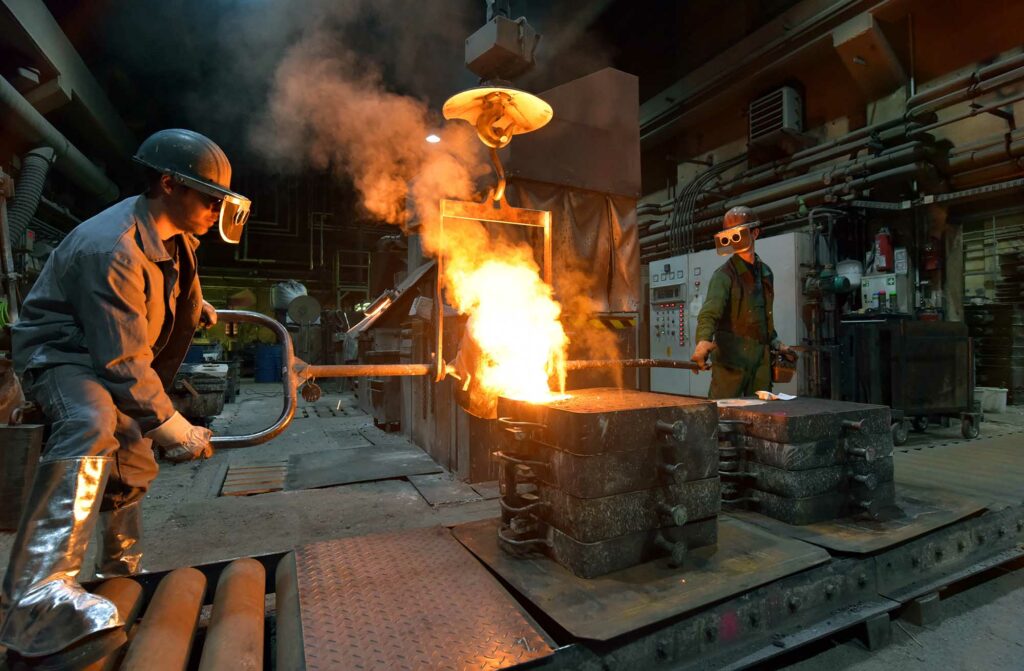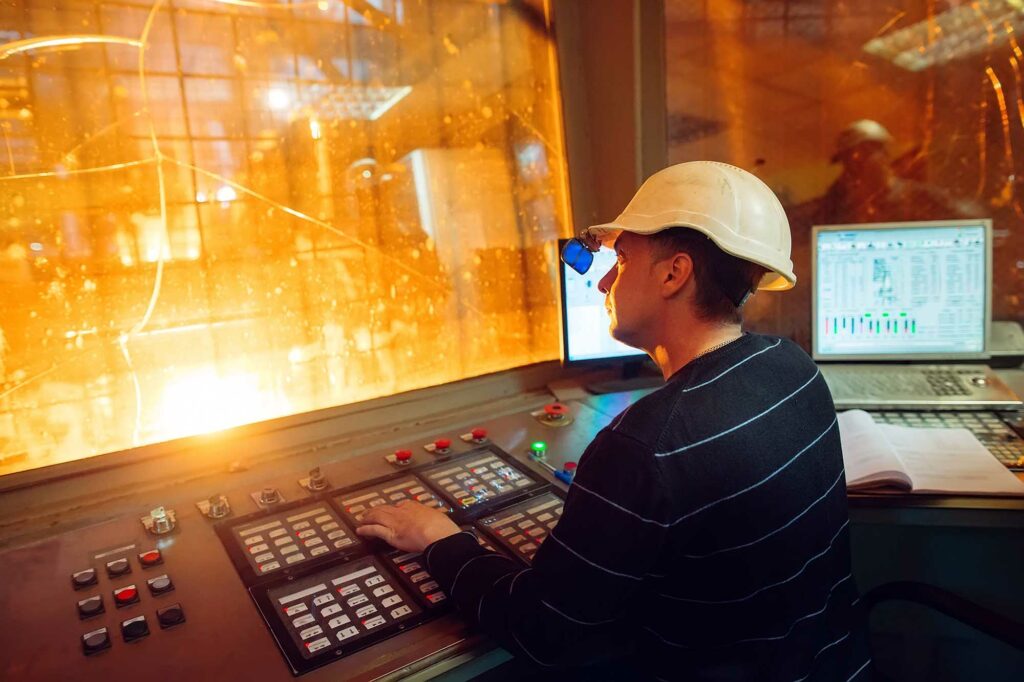Basically, it is quite an idyllic place where the halls of Schmiedag GmbH in Hagen (Germany) are located. To the east of the factory site, on the opposite side of the main road B54, you head towards Hagen city center, and to the west of the site you go up to the wooded Philippshöhe. The factory site is divided by the Volme creek into a western and an eastern part, several bridges lead from the entrance area with the administration buildings to the western part with the forge.
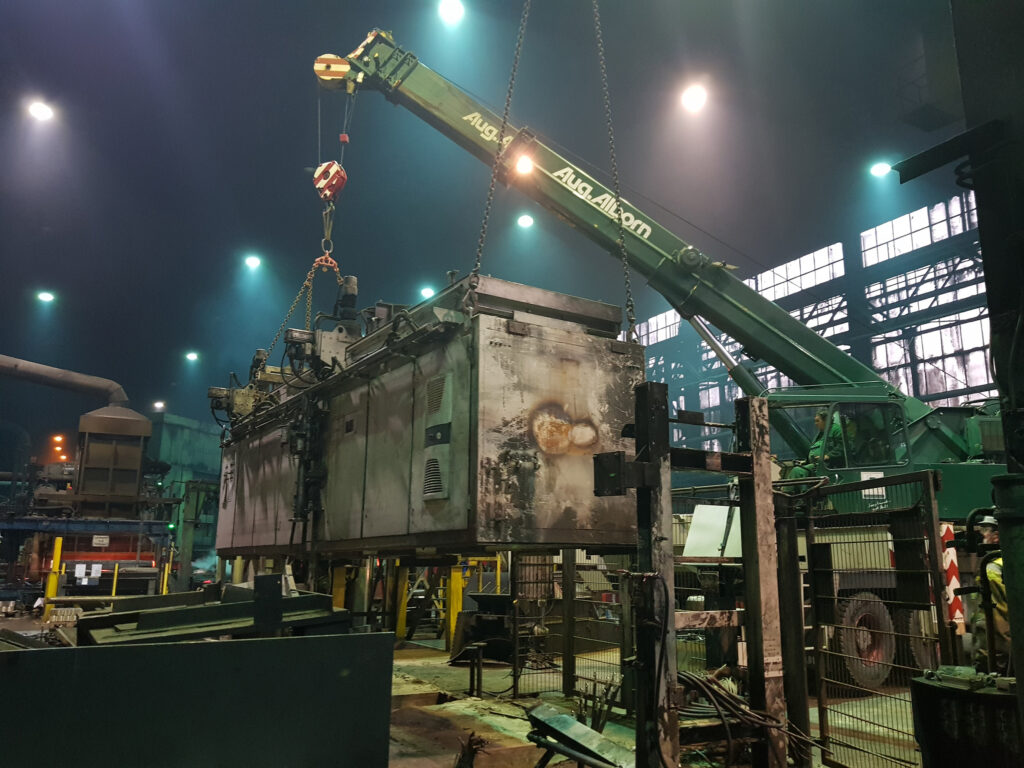
On July 14, 2021, the idyllic location turned into a disaster: During the massive storm that hit North Rhine-Westphalia that day, a flood situation arose that within a very short time had caused the Volme to swell – until it finally burst its banks and flooded the plant site with all its machinery, equipment and facilities. 17 employees were forced to take refuge on a hall roof and hold out there during the night – it was the last resort.
A little more than a year later, the site is once again bustling with activity. Visually, almost nothing reminds one of the catastrophe a year ago, and the ABP Induction heater is also running smoothly again. This, too, was covered with water following the catastrophic storm. After the water had receded, the equipment was salvaged, cleaned and overhauled by ABP, who then handed the upgraded system back to Schmiedag. Until then, however, the Hagen-based company had to cope with a few critical and life-threatening weeks.
Flood disaster in Hagen: In July 2021, the Volme River overflows its banks
Looking out of the window in the meeting room of Schmiedag’s administration onto the Volme, it is hard to believe what authorized signatory Detlev Müller recounts about the dramatic hours from July 14 to 15, 2021: “Due to the continuous rain, the Volme rose steadily and was already just below the bridge in the afternoon. Then I went over to the forge for a check, and when I came out of the hall again about half an hour later, the water was already flowing over the bridge decking.” Müller went back to the hall, had the production stopped immediately and evacuated all employees. 17 employees did not make it directly, Müller was one of them. The main escape route from the factory premises, the underpass to the B54, was flooded; the vehicles of the factory staff, which were still in the employee parking lot were lost. “When the water was about 30 centimeters on the site, I instructed everyone to climb onto one of the employee offices, where we could have used ladders to reach the roof of the hall in an emergency. Anything other than entrenching ourselves would have been too dangerous, because the water was coming from all sides and the current was unpredictable, with a tremendous flow speed.”
It was not only the water that proved problematic, but also the flotsam on the Volme, which was carried along by the masses of water and collected at and on the bridges on the plant site. The southernmost bridge with the most flotsam acted like a dam that could break at any time, so that even more water could have flowed uncontrollably toward the factory buildings in one fell swoop. “Meanwhile it was dark and if flotsam then breaks loose and is heading towards you, there is practically no escape. It was therefore clear to us that we had to spend the night on the factory premises, because any further attempt to escape would have been too dangerous. In the end, the water stood at a height of about 1.90 meters above the floor of the halls.”
This meant that all the facilities were also flooded. The team on the site had acted with foresight and de-energized the entire plant: “The electricians naturally think ahead in such situations, removed all the main switches and cut off the power supply, which subsequently turned out to be an advantage when it came to damage limitation and reconstruction”, Müller explains.
ABP’s heater was also affected, was full of water, mud and residue
The team around Detlef Müller that remained on the premises was rescued by boats from the German armed forces early in the morning. Müller met later with a team to sound out the situation and check whether the site could be re-entered. “The water is one thing, but when it had receded, everything was full of mud – everywhere. And we had to deal with dust, for weeks, settling everywhere.” ABP’s warmer was also affected, was full of water, mud and residue.
The future of Schmiedag was hanging by a thread in this situation, as the technical manager of the Schmiedag GmbH, Heinz Klenen, explains: “If nothing works at all, neither electricity nor IT, and all machines are affected – then this was basically a total loss.” However, the company benefited from being part of the Georgsmarienhütte Group. “The colleagues were able to help quickly – we moved products to other locations, were able to use resources such as experts, or the group’s own company fire brigade, which was able to supply us with lots of material that we didn’t even have here – from shovels to wheelbarrows to pumps,” explains Detlef Müller, “the colleagues came at the weekend, pumped out and set up construction dryers.” The motivated team both in the group and at the Hagen site contributed a lot to the fact that Schmiedag was able to resume production comparatively quickly.
The colleagues from the group were also able to help with the power supply: For electrical switchgear and power feeds, a site from the group could help that had similar equipment as needed by Schmiedag. This allowed for much faster restart than if a completely new feed had been needed. With the help, high voltage could be brought to the site in late August 2021 and the first plant could go back into operation. “With all the misfortune, there was also a lot of luck”, explains Heinz Klenen, “with the available replacement machines, for example, with quick help from the other plants, and the fact that we were just in the repair phase and had shut down the furnaces. All tempering furnaces were out of operation – much more could have happened if they had been running in full operation at high temperatures. They cannot be shut down in half an hour, especially since there was no warning whatsoever that such a flood disaster could hit us, and not even at short notice that masses of water were moving towards us.”
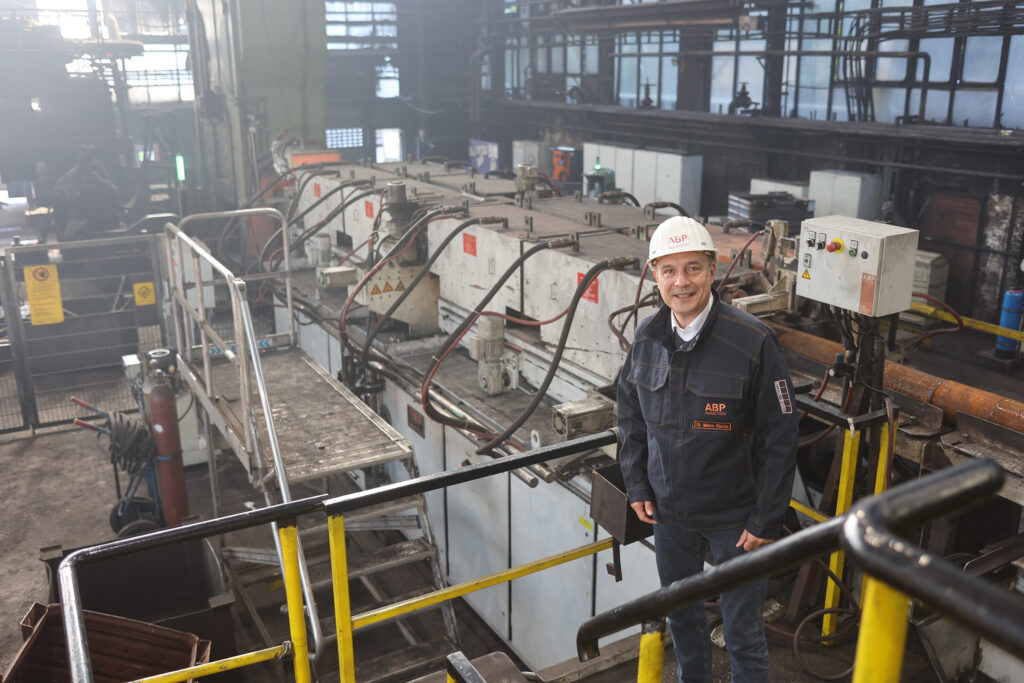
ABP Induction, too, was able to contribute to the quick return to normality. The ABP heating system type EBS 460 WK installed at Schmiedag was affected by the flood. A large part of the heater had been under water and was damaged and dirty after the water receded. An ABP team inspected the plant in November 2021 and prepared a quotation for a comprehensive modernization of the heater. Practically, all the relevant components of the heater had to be replaced and renewed, starting with the feeder panel with circuit breaker and fuses to the four IGBT converters with mains chokes, coupling choke, control boards and fan including control panel. All current transformers, voltage transformers and insulation monitoring were also affected, as well as the drive cabinet with all frequency converters and the control panel.
“As the old hardware was no longer available, new, up-to-date Siemens hardware was used. The program was upgraded to TIA. As a result, the control technology of the heating system is now again on a par with that of a new system”, explains Dr. Marco Rische, Director System Business at ABP Induction. ABP was also able to respond to special requests for the reconfiguration of the plant. The withdrawal at the heater was to be changed from an inclined lift to a robot withdrawal in the course of modernization. For this purpose, a coupler module was used to provide communication and signal transmission to the robot. The engineering also had to be adapted. To this end, ABP supplied a second light barrier so that block adhesives can be detected more efficiently.
Schmiedag heater: General overhaul at ABP Plant in Dortmund, Germany
The heater was brought to the ABP plant in Dortmund and completely refurbished. It had been completely overhauled already by mid-March 2022 and could be delivered to Schmiedag again. “It was important to us to help quickly and without complications and to improve the system in all possible places during the modernization. Today, the heater is as efficient as a new system”, explains Dr. Marco Rische. Aspects such as variability and energy consumption also play a role. The heater is appropriately tuned to loading and unloading, the operation is optimized in terms of energy, and due to the introduction of the robot unloading, also for throughput.
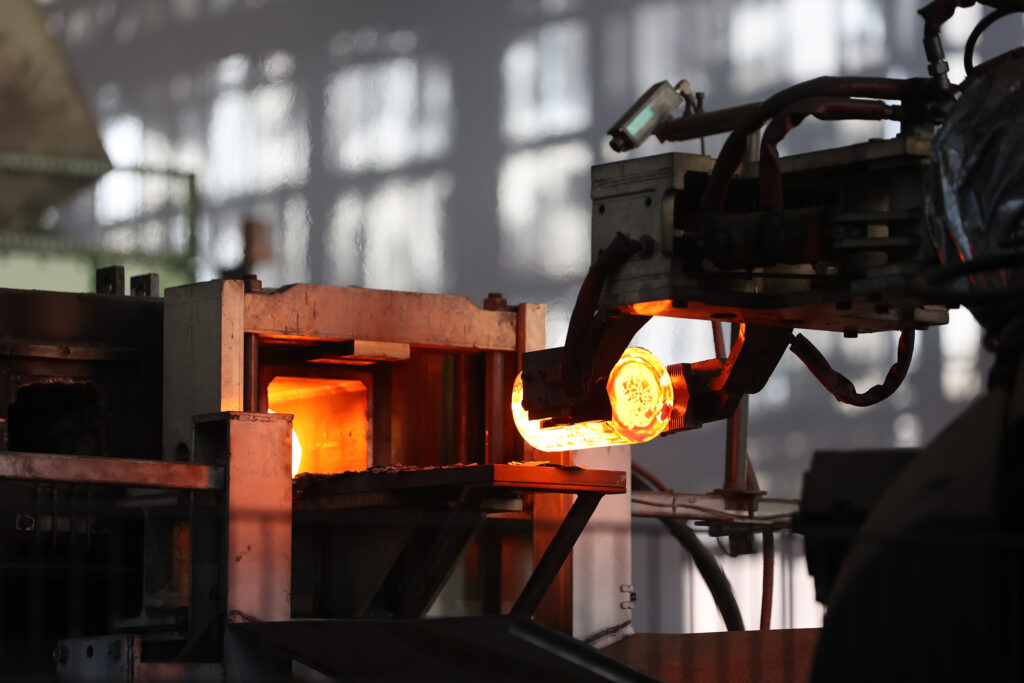
The other systems and equipment at Schmiedag were also put back into operation step by step. The backup server with all relevant operational and customer data, for example, was well protected. “Fortunately, we had planned the server’s position so that it remained above the water surface.” This helped to resume operations: “Nothing would have worked without the data.”
Even long-time employees cannot remember such a similar disaster: A colleague in the maintenance department has been here for just under 45 years now and had never seen anything like this. You cannot deliberate on every scenario. But we are now differently prepared for possible cases in the future with the knowledge we have today.
About ABP Induction
ABP is a leading manufacturer of induction furnaces and systems for inductive melting and holding for the metal and metalworking industries. ABP is an expert in melting, pouring, holding and heating iron, steel and non-ferrous metals with design, production, assembly and services for foundries, forges and steelworks. The ABP Induction Group with over 400 employees has companies in the USA, Mexico, Sweden, Germany, South Africa, Russia, India, Thailand and China. It is represented by service and sales partners in most of the world’s industrialized countries.

